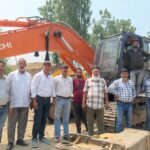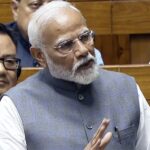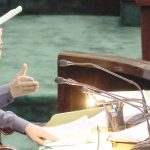Lok Sabha Election 2024 has been a litmus test for the Bharatiya Janata Party (BJP) in Jammu and Kashmir. It has revealed the strengths and weaknesses of the party in terms of its political presence among various segments of the society across the Union Territory. The process for the electoral process both at the Lok Sabha level and the Legislative Assembly level in Jammu and Kashmir gained currency when New Delhi was eager to go for the delimitation on the old census and it didn’t wait for the new census that was due a couple of years ago. Though the constitutional experts had suggested in civil society forums that the old census was having discrepancies and these need to be corrected in order to deliver justice to all the regions of Jammu and Kashmir. But the centre preferred to go with the old census. Before conducting the Lok Sabha Elections the BJP ensured that it gained ground in Jammu and Kashmir so that it can create a political critical mass to be able to be politically relevant. Its unit in Jammu and Kashmir has made immense efforts to create a space in Kashmir region where it has not been a political force to reckon with. Jammu has been its traditional bastion since the Bharatiya Jana Sangh days(BJS). After emerging as the single largest party in 2014 at the national level and then again leading the national government for the second time it became confident that it can turn the tables in Jammu and Kashmir after the neutralisation of Article 370 and 35 A. It interpreted the neutralisation of these articles in a way that demonstrated the political inclusion of the marginalised sections of the society. These include Valmikis, Scheduled Castes (SCs), Scheduled Tribes (STs),Other Backward Castes(OBCs) and the Women. It had a point as due to Article 370 and 35A it restricted the centre to implement the welfare schemes meant for these sections. Welfare schemes for these sections were already in practice in other parts of India. It generated a euphoria among the stakeholders. Once the Lok Sabha elections were announced and scheduled, BJP fielded its candidates from Jammu only and preferred to keep the turf in Kashmir vacant. As it did not field its candidates from Kashmir. It made it abundantly clear that in spite of mobilising its cadres in Kashmir it failed to have the confidence to contest elections. Instead it issued a party whip in different ways asking the electorate to cast votes in favour of Apni Party and People’s Party. It knew well that despite working in Kashmir and gaining newly sensitised recruits for the party, BJP is not yet equipped to fight the electoral battle in Kashmir. Not only that, BJP banked on the religiously cleansed and internally displaced Kashmiri Pandits to enable the Apni Party and Peoples Conference to gain votes so that their defeat margin was reduced. It is a different matter that Kashmiri Pandits voters can neither be the game changers nor can their candidates win as the electoral calculus does not address their votes proportionately. Now a new simmering is emerging that to consolidate the party and its cadre BJP is in search of a new party president who can lead the party in the forthcoming Assembly Elections. Caste factor is being discussed in the party circles for this post .As per this theory the BJP in Jammu has been led by Brahmin Presidents for so many years now. These past Presidents include Jugal Kishore Sharma, Sat Sharma and the incumbent President Ravinder Raina.There seems to be a lobby working to dislodge Ravinder Raina.Whatever be the reason. It is an internal matter of the BJP but one thing is clear that Ravinder Raina has emerged as the mass leader who is acceptable to all sections of the society and is popular among the marginalised sections. He has been present and visible in the public domain when other leaders have not been able to be among the public. BJP needs to re -strategize and weigh its options before it shapes the new format of the party for the much awaited Assembly Election in Jammu and Kashmir.
BJP’s Presidential Challenge in Jammu and Kashmir

Sign Up For Daily Newsletter
Be keep up! Get the latest breaking news delivered straight to your inbox.
By signing up, you agree to our Terms of Use and acknowledge the data practices in our Privacy Policy. You may unsubscribe at any time.
Leave a Comment
Leave a Comment
Stay Connected
Latest News
Recent Posts
- J&K: Suspected foreign national apprehended by Katra police for illegal entry
- DC Srinagar chairs DLRC/ DCC meet; Reviews performance of Banks in implementation of Govt sponsored schemes
- Speaker has not disallowed/ rejected Resolution on declaration of Holiday on 13th July
- 3 houses damaged, 3 firefighters injured in massive fire in Budgam village
- ACB arrests Patwari while accepting bribe in Budgam







